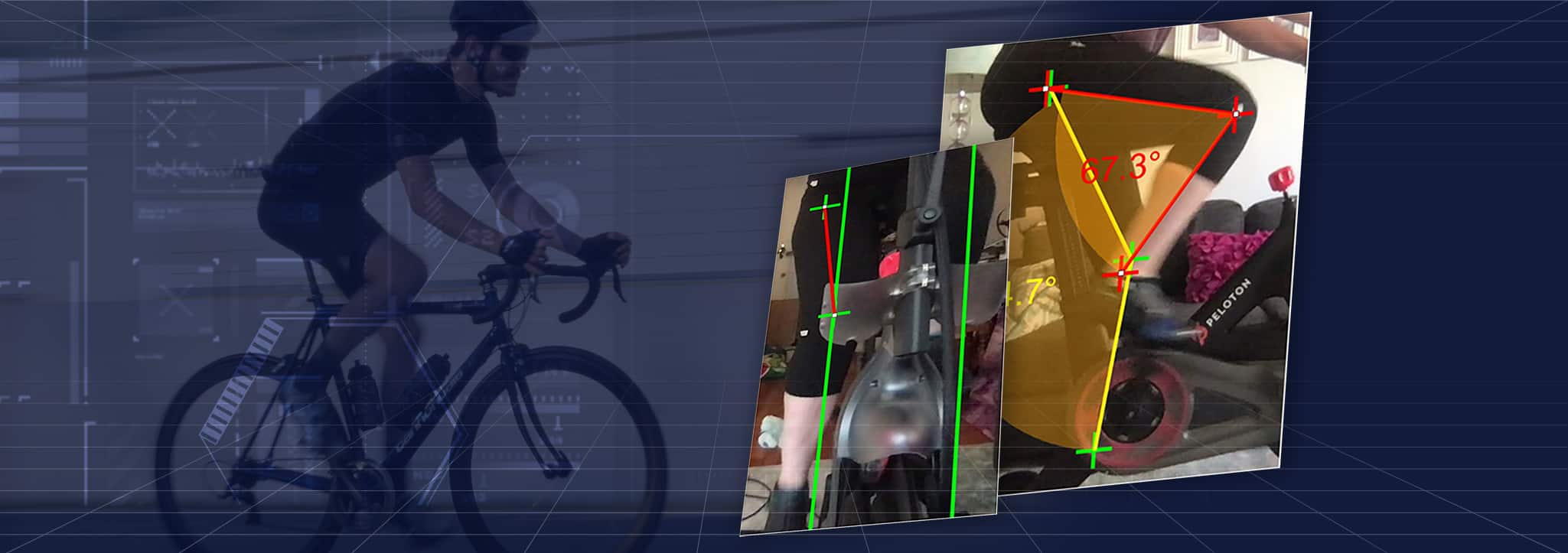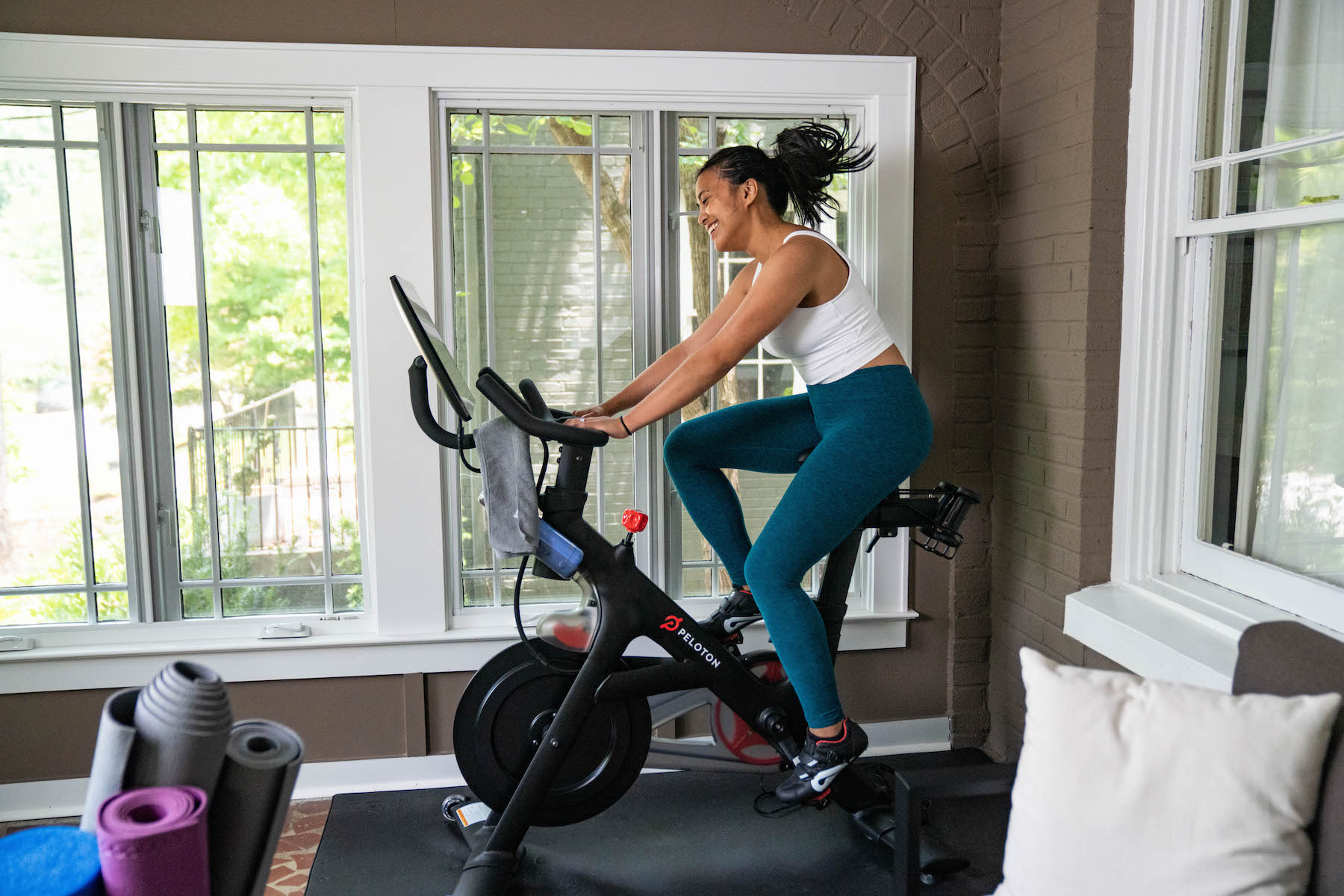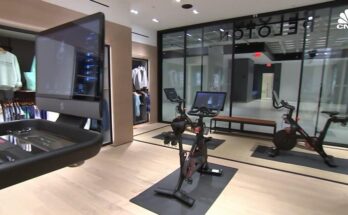Knee pain on a Peloton can arise from improper bike setup or poor pedaling technique. Adjusting your bike and form may alleviate the discomfort.
Riding a Peloton offers a convenient and immersive indoor cycling experience, but it’s not uncommon for users to experience knee pain. The primary causes often stem from seat height and position, incorrect cleat alignment, or the intensity of workouts. Ensuring that your Peloton bike is correctly set up to match your body’s dimensions is crucial.
The correct saddle height and position aid in preventing overextension or strain on your knees during pedaling. Cleat alignment, which dictates the angle and position of your foot on the pedal, is equally important to avoid undue pressure on knee joints. Additionally, gradually building up workout intensity allows your muscles to adapt without overwhelming your knees. Addressing these aspects can contribute to a pain-free and enjoyable Peloton experience.
Common Causes Of Knee Pain During Peloton Workouts
Riding your Peloton bike can be exhilarating. Yet, sometimes your knees might protest with pain. Let’s explore common reasons your knees might be hurting from Peloton workouts.
Incorrect Bike Setup
Improper bike settings can lead to knee pain. Here’s what could be wrong:
- Seat height: Too high or low affects knee angles.
- Seat position: Far back or forward stresses knees.
- Handlebar height: Wrong height causes awkward posture.
Adjust your Peloton bike correctly. Ensure knees bend slightly at the pedal’s lowest point.
Overtraining And Lack Of Rest
Working out too much without rest can hurt your knees. Signs include:
| Signs of Overtraining |
|---|
| Soreness lasting days |
| Swelling in knee joints |
| Decreased performance |
Take days off between intense rides. Balance workouts with light activity and stretching.

Credit: blog.dartfish.com
Anatomy Of The Knee: Susceptibility To Injury
Picture your knee as a complex hinge that connects your thigh bone to your shin bone. This joint is always in motion, bending and flexing. It supports nearly all of your body weight. Because of this constant use, the knee is prone to injury, particularly when introducing new exercises or workout routines like those on a Peloton bike.
The Knee Joint Structure
Your knee joint is not just bones; it also includes tendons, ligaments, and cartilage. These parts work together to make your knee move smoothly. Below is a look at the key components:
- Femur: The thigh bone or upper leg bone.
- Patella: Known as the kneecap, it protects the front of the joint.
- Tibia: The shin bone or larger bone of the lower leg.
- Ligaments: Bands that connect bones and give stability.
- Menisci: Two C-shaped pieces of cartilage that cushion your knee.
Impact Of Exercise On Knee Health
Exercise is essential for staying healthy. Yet, some exercises can be hard on your knees. When you ride a Peloton, your knee goes through a repetitive motion. This can strain parts of the knee if your bike is not set up right or if you have a weak muscle supporting the knee. Here are ways exercise impacts knee health:
| Activity | Impact on Knee |
|---|---|
| Cycling | Low impact, but repetitive motion can strain over time. |
| Resistance Training | Strengthens muscles around knee but can strain if done incorrectly. |
| Running | High impact, can lead to wear and tear over time. |
To protect your knees, ensure your Peloton bike is properly adjusted. Always warm up before exercising. Strengthen your leg muscles to support your knees. Keep your movements smooth and steady. A careful approach to exercise empowers you to keep your knees healthy and strong.
Evaluating Your Peloton Form
Are your knees screaming after a ride on your Peloton? It’s time to check your form. Like in any exercise, form means everything. Good form ensures your workouts are effective. It also stops pain before it starts. Here’s how to keep your knees happy on your Peloton.
Importance Of Proper Posture
Standing tall and sitting right makes a difference. Your knees feel every inch of your slouch. Aim to:
- Align your hips over the pedals.
- Keep shoulders down and back.
- Engage your core muscles.
Back pain and knee discomfort often fade with better posture.
Pedal Technique And Knee Strain
How you pedal impacts knee strain.
| Don’ts | Do’s |
|---|---|
| Avoid pointing toes down. | Keep feet flat. |
| Never lock knees. | Soft knee bend is key. |
| Skip the extremes. | Pedal through the center of your foot. |
Remember, great form leads to a better ride and happier knees.

Credit: www.onepeloton.com
Adjusting Your Peloton For Optimal Comfort
Are your knees aching after a Peloton session? Proper bike adjustment might be the key! Riding with your Peloton not set up right can hurt your knees. But don’t worry, the right settings can fix this. This guide looks at how tweaks to seat height, handlebars, and cleats increase comfort. So you can enjoy pain-free rides.
Seat Height And Position
Getting the seat right can make a big difference. A seat too low strains your knees. Too high, and your hips wobble. Follow these steps:
- Stand next to your bike.
- Adjust the seat to hip level.
- Get on and pedal to check.
With your pedal at the lowest point, your knee should have a slight bend. Move the seat forward or back, so your knee lines up with your toes when pedaling.
Handlebar Adjustments
Handlebar height affects comfort. Riding with them too low or high strains your back and neck. Here’s how to get it right:
- Adjust the handlebars to seat height or slightly above.
- Ride and reach out.
- Your elbows should be slightly bent.
For more comfort, the handlebar distance should allow a natural reach. Your shoulders must feel relaxed, not hunched or stretched out.
Cleat And Shoe Considerations
Right shoe and cleat setup avoid knee pain. It’s all about the right position and angle. Remember:
- Cleats should let your foot point naturally.
- They must hold firm in the pedals.
- Position them so your knees move straight up and down.
Align the cleats with the ball of your foot for optimal power and less strain.
Incorporating Strength Training And Stretching
Exercises For Supporting Knee Strength
Targeted exercises can fortify muscles around your knees. This can help bear the load and minimize knee discomfort.
- Squats – Strengthen your quads and glutes.
- Lunges – Improve your balance and stability.
- Leg Presses – Focus on your thigh muscles.
Keep a balance in your workouts. Do not overload. Correct form is key. Avoid too much weight or strain.
| Exercise | Muscles Worked | Reps |
|---|---|---|
| Wall Sit | Quads, Glutes | 3 sets of 30 seconds |
| Step-ups | Hamstrings, Quads | 15 reps per leg |
| Calf Raises | Calf Muscles | 3 sets of 20 |
Essential Stretches For Cyclists
Stretching is just as crucial. It can help lengthen muscles and prevent stiffness. Consider these stretches post-ride:
- Hamstring Stretch – Aids in flexibility behind your knees.
- Quadriceps Stretch – Keeps the front of your thigh supple.
- Calf Stretch – Helps avoid cramps in your calves.
Perform each stretch for at least 30 seconds. Do not rush. Breathe deeply as you stretch.
- Yoga – Poses like Downward Dog and Child’s Pose are beneficial.
- Pilates – Engages deeper muscles for better pelvic stability.
Include dynamic stretches before rides. This can prepare your muscles and boost riding performance.

Credit: m.facebook.com
When To Seek Professional Help
Pushing through a Peloton session feels great, but knee pain can be a red flag. It is crucial to recognize when discomfort shifts from routine strain to a potential injury. Understanding when to seek professional help is key to ensuring your health and fitness journey isn’t sidelined by preventable issues.
Identifying Serious Knee Injuries
Not all knee pain is serious, but some signs should prompt you to act swiftly:
- Intense swelling or redness which doesn’t recede
- Pain persists even at rest
- Decreased range of motion or strength in your knee
- Sharp, stabbing pain during exercise
- Unusual popping or crunching noises
These symptoms might indicate injuries like meniscal tears, ligament strains, or even fractures.
Options For Medical Consultation And Treatment
If the pain from your Peloton sessions is persistent and impairs daily activities, it’s time to consider professional advice. Here are your options:
| Consultation Type | Benefits |
|---|---|
| Physiotherapist | Personalized exercise plan, pain management strategies |
| Sports Medicine Specialist | Detailed injury diagnosis, advanced treatment options |
| Orthopedic Surgeon | In-depth assessment, surgical intervention if necessary |
Early intervention can mean quicker recovery and fewer complications over time. If home remedies don’t bring relief, seeking medical consultation is the next step to keep your knees healthy for the long ride.
Frequently Asked Questions For Why Do My Knees Hurt On Peloton
How Do You Adjust Peloton For Knee Pain?
Adjust your Peloton bike to avoid knee pain by setting the correct seat height and position, handlebar height, and ensuring proper foot placement on the pedals. Consult a professional for personalized fitting.
How Do I Stop My Knees From Hurting When Cycling?
To prevent knee pain during cycling, adjust your saddle height, ensure proper bike fit, stretch regularly, strengthen your leg muscles, and avoid overexertion. Maintain a smooth pedal technique and consider professional bike fitting for optimal comfort and efficiency.
Is A Peloton Bike Ok For Bad Knees?
A Peloton bike can be suitable for individuals with bad knees when used with proper form and resistance settings to reduce strain. Consult with a healthcare professional before starting any new exercise regimen.
Why Does Spinning Class Make My Knees Hurt?
Spinning class can cause knee pain due to improper bike setup, intense resistance levels, or incorrect posture during the workout. Overuse and lack of stretching may also contribute to discomfort.
Conclusion
As we wrap up, it’s clear understanding knee pain on your Peloton is crucial for a pain-free ride. Correct bike setup, proper form, and stretching are key. Remember this advice and pedal forward with comfort. Consult a professional if pain persists.
Keep spinning and stay healthy!



